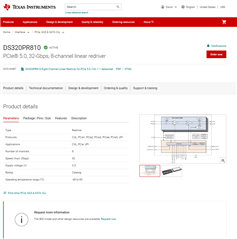Tool/software:
In previous topic it was recommended to connect the PD pins to inverted PERST# or to PRESENT#. What about the RX_DET pin? There are 3 options in the datasheets:
- Connect to L1 - Outputs polls until 3 consecutive valid detections
- Connect to L2 - Outputs polls until 2 consecutive valid detections
- Connect to L4 (Float) - Tx polls every ≅150 µs until valid termination is detected. Rx CM impedance held at Hi-Z until detection Reset by asserting PD0/1 high for 200 µs then low.
Which one is best for PCIe ?
Thanks,
Avi



